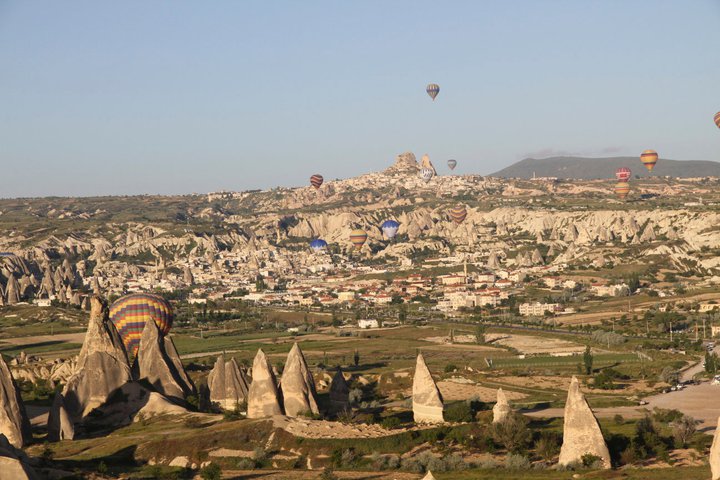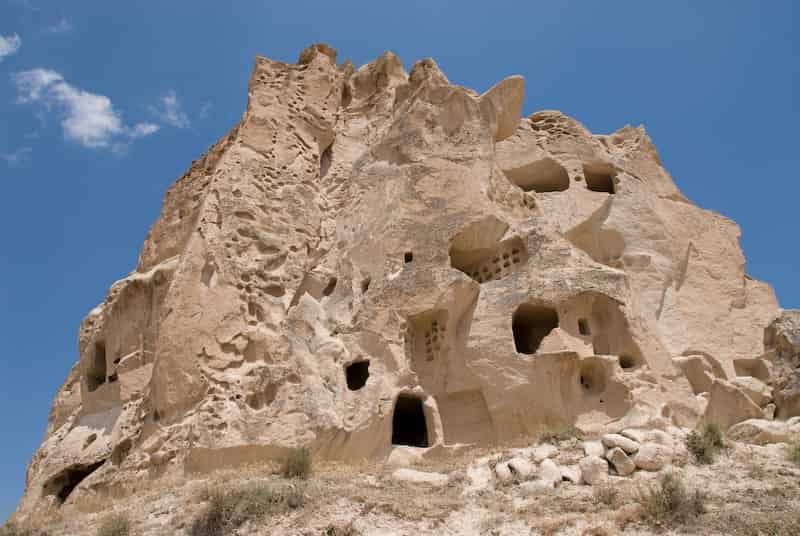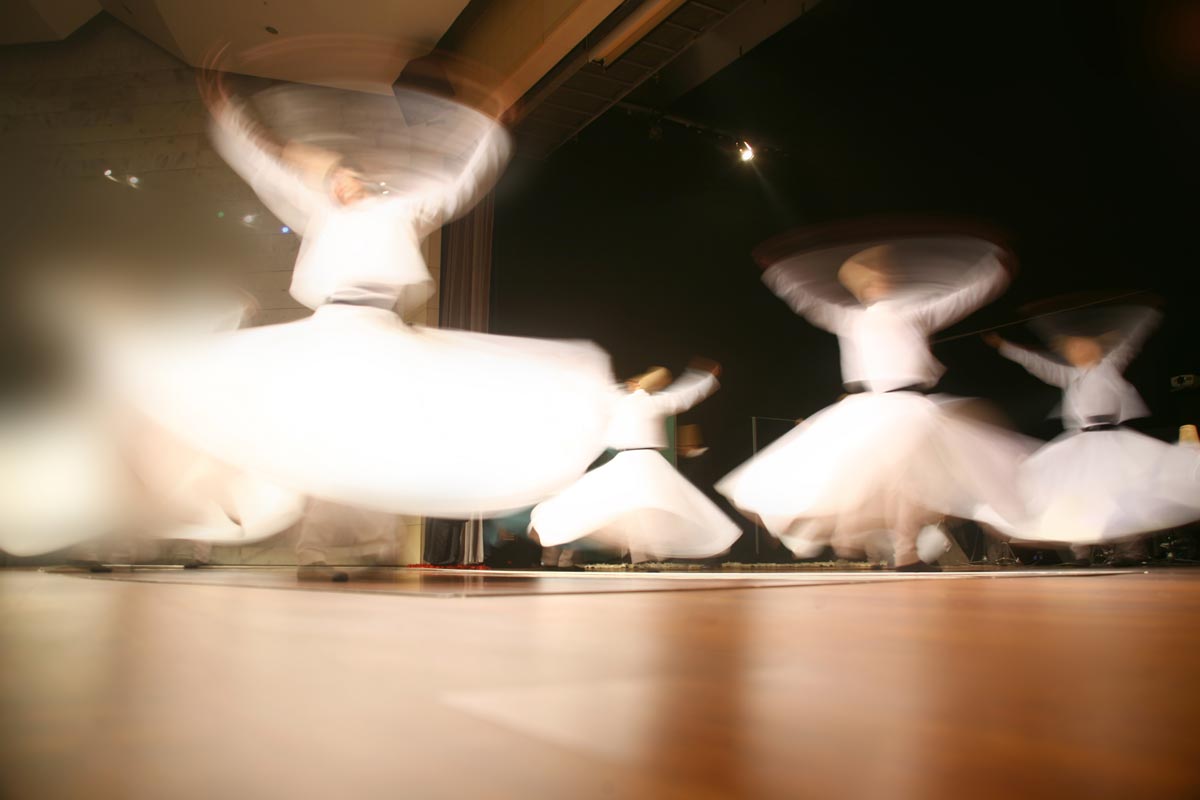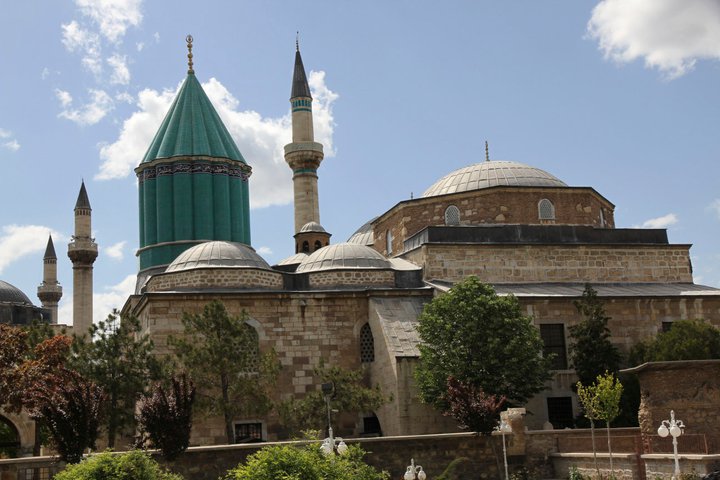There's a place in Turkey where I descended into the bowels of the earth, terrified I'd never resurface, then flew to the highest reaches of the heavens, afraid I'd plummet to my doom. I laughed and made jokes, yet I was also silent, pondering the sacred. I felt corporeal and ethereal, often at the same time. Where was I? Cappadocia, of course--the central Turkish region famed for its strange geological formations, hot air balloons and spectacular Whirling Dervishes. If you're going on a Backroads Turkey trip, it's an unforgettable place to extend your vacation.
Thousands of years ago, volcanic eruptions blanketed Cappadocia's valley with ash that eventually solidified into giant columns of volcanic tuff. Over centuries, human hands carved these formations into an otherworldly troglodyte settlement, now a World Heritage site. Walking through the valley, I stumbled into one of these ancient caves; the faded paintings on the walls, the apses and the pews all filled me with a quiet reverence. As I continued my walk, I found many more of these early places of worship, tucked clandestinely into the cliffs to avoid detection. These holy places are accompanied by vast underground compounds, where believers would flee to avoid persecution.
These hollowed-out tuffs also served as simple dwellings. If you visit Cappadocia, you'll likely stay in Göreme, a town carved into a prominent volcanic peak long ago. Its historic homes resemble Hobbit-holes, many of which have been turned into luxury hotel rooms. Overhead, hundreds of brilliantly colored hot air balloons rise nearly every day, creating an atmosphere at once claustrophobic and expansive, ancient and modern, sacred and profane. This multifaceted land is also one of the places in Turkey where outsiders can witness the transcendental Sufi ritual known as the Sama, or the Whirling Dervishes. The Whirling Dervishes are members of the Mevlevi order, which was founded in AD 1273 by followers of the poet, mystic and theologian Rumi. Their twirling meditation is part of a unique form of dhikr--an Arabic term for devotional acts that roughly translates to "remembrance."
The Dervishes' dhikr is broken up into four parts: an opening prayer; a procession in which the Dervishes bow to each other, an acknowledgment of the sacred breath within each of us; the four Salams, during which the Dervishes (representing the planets) spin round the Sheikh (representing the sun) with their right palm facing the heavens and their left palm facing the ground, embracing God's love from above and bringing it to those on earth; and a concluding recitation from the Quran. This is accompanied by live music, an integral part of the ceremony that helps the Dervishes focus on God rather than their personal desires. The practice of dhikr was actually outlawed by Kemal Ataturk in 1925 as part of his sweeping reformations that turned what was left of the Ottoman Empire into the Turkish Republic. In 1954, the Sufis were allowed to perform their ritual in public again because it was such a tourist attraction. Today, many Sufis have embraced the touristic fascination with their religion since it effectively allows them to practice unfettered.
What makes Cappadocia such a special place to see these Whirling Dervishes is the setting: a 13th-century caravanserai, which is like a medieval rest stop. Built along trade routes by Anatolian sultans in the 12th and 13th centuries, caravanaserai were spaced no more than a day's camel trek apart. These fortified compounds afforded traveling merchants a safe place to rest, resupply and even take a Turkish bath. It's under the roof of one of these historic buildings that modern-day travelers get to enjoy the Dervishes' performance. After spending the day traversing Cappadocia's bizarre, beautiful and timeless landscape, I took my seat on a cool wooden bench and slipped into a trance as the drum began to sound. A hammered dulcimer and a ney flute joined in. The entire building was transported to a place outside of time and space as the Dervishes began to slowly spin and twirl. I drifted back and forth between then and now, the inside of the caravanserai and the unearthly landscape outside. As the Sufis whirled, it was as though everyone in the building spun with them. No one moved, coughed or even whispered--we were all a part of their sacred ritual, suspended somewhere in the universe for a moment in time when even the most cynical person in our group (which was probably me) was deeply and spiritually moved.











